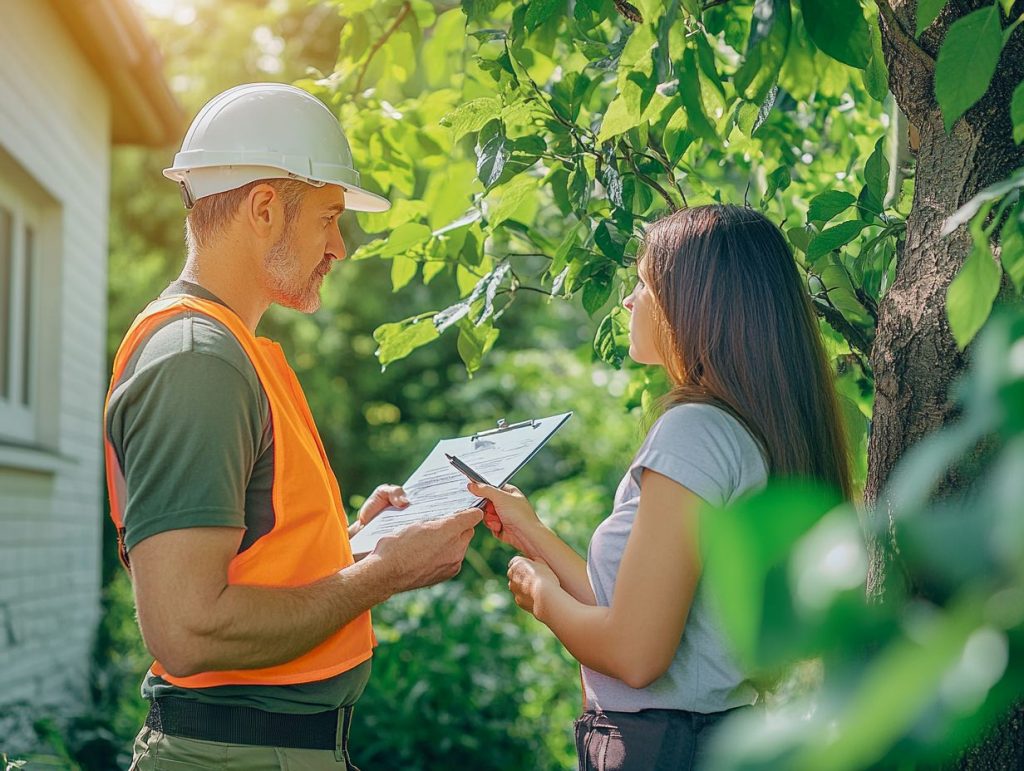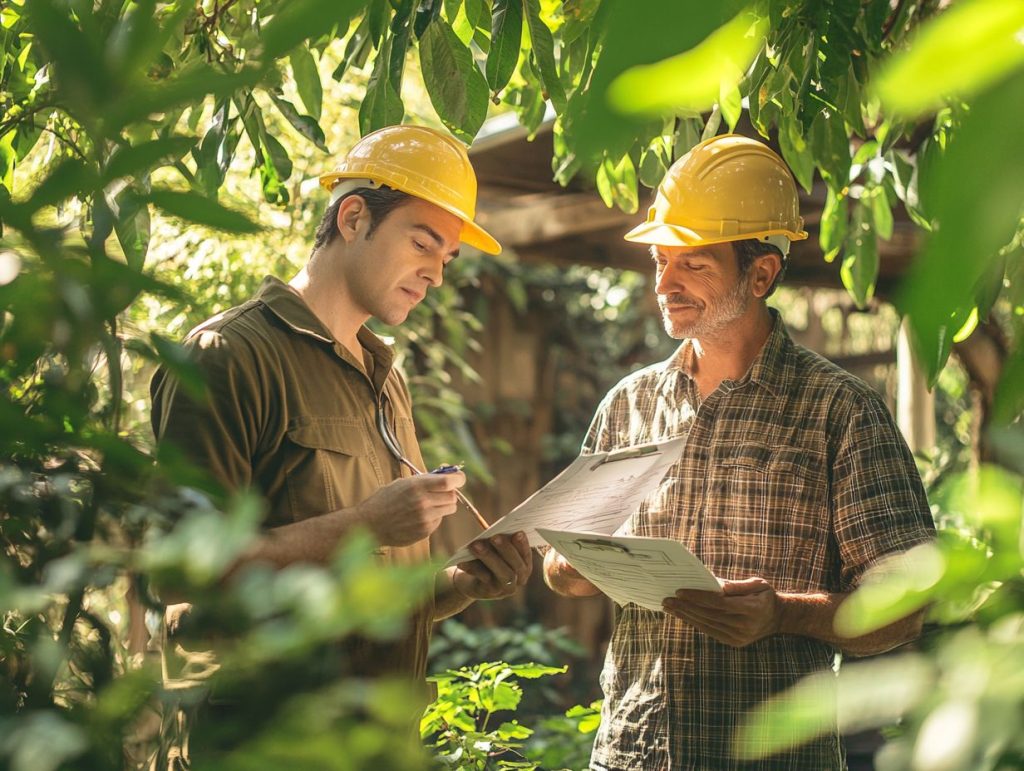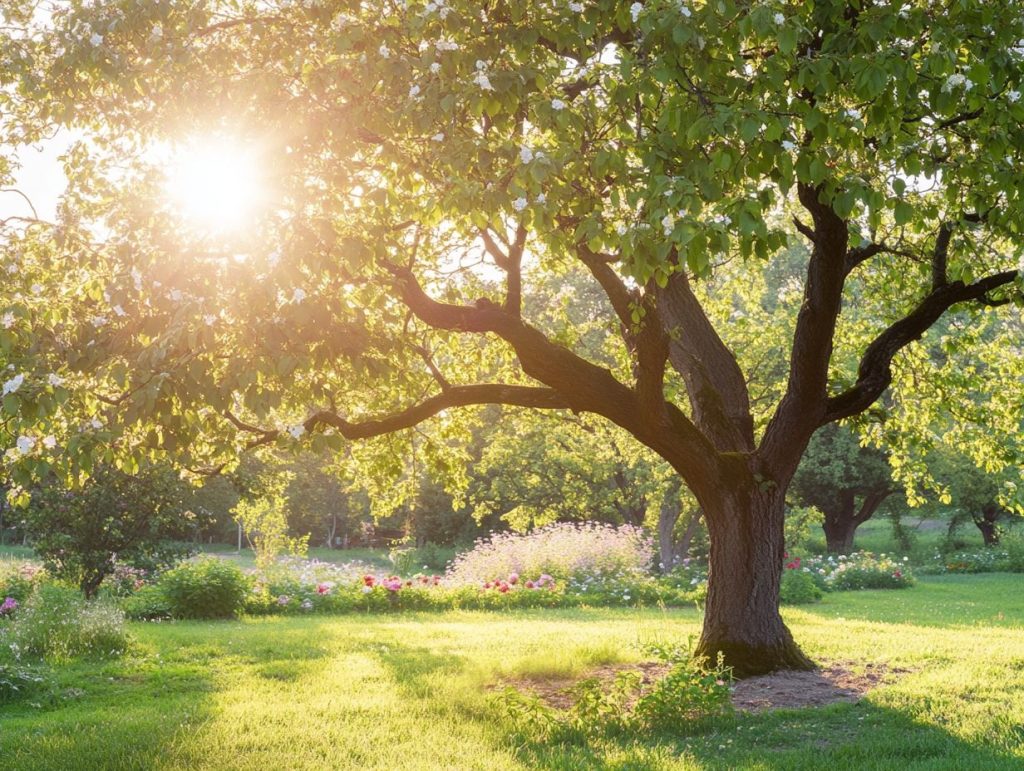Most London homeowners take the trees in their garden – especially the older, large ones – for granted. And who can blame them? Is there a more powerful symbol for stability and ageless strength than a centenarian oak? And yet, these marvellous giants can pose a threat to your property if you do not care for them properly.
Tree surgery is essential for maintaining the health and safety of trees on your property. But what exactly does it entail? This article explores the definition and purpose of tree surgery, highlights common causes of property damage from trees, and discusses how proper maintenance can prevent such issues. It also covers the importance of hiring a qualified tree surgeon, the techniques they use, and provides tips for keeping your trees healthy.
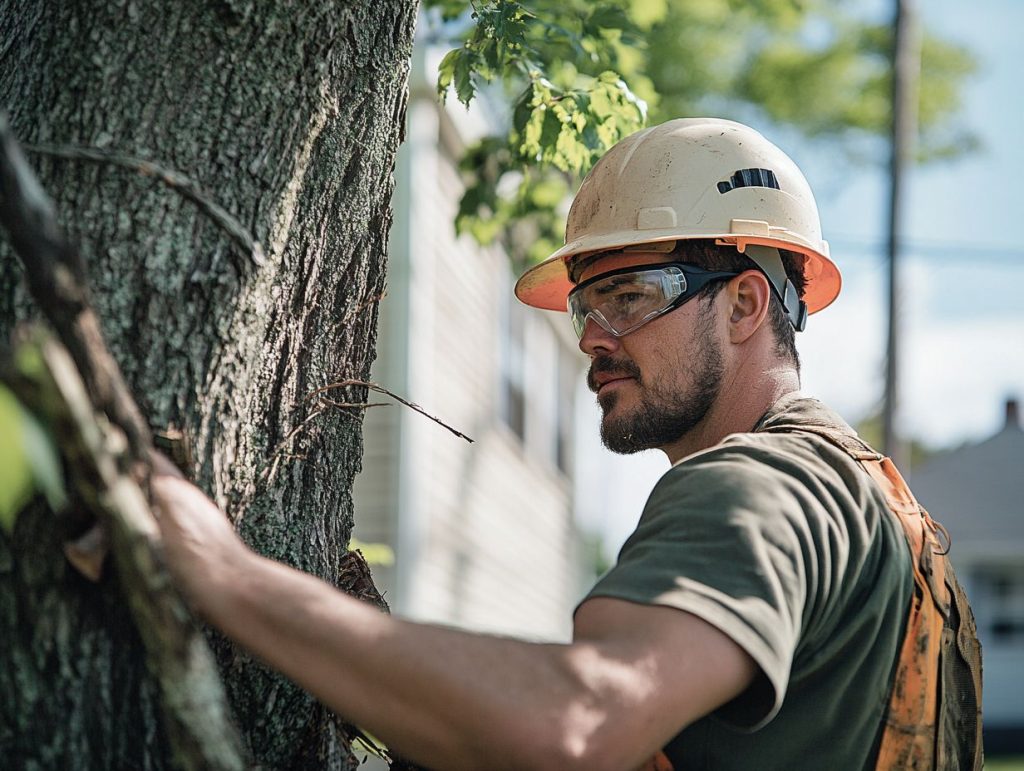
What is Tree Surgery?
Tree surgery, or tree care as it’s often called, is a specialised practice you’ll want to leave to trained arborists who know how to keep your trees healthy and thriving. This includes a range of techniques like pruning, tree removal, and root management, all aimed at boosting tree health and ensuring safety for everyone around.
When done correctly, effective tree surgery helps prevent those pesky safety hazards from falling branches and contributes to the ecosystem by promoting tree growth and tackling invasive species. Additionally, regular tree inspections are vital for spotting and treating diseases that could threaten the structural integrity of your beloved trees.
Common Causes of Property Damage from Trees
Trees can cause a headache regarding property damage, especially during inclement weather. Strong winds or heavy snow can send branches crashing down or even uproot entire trees.
If you’re a homeowner, it’s crucial to understand what typically leads to tree-related property damage so you can manage your garden wisely and protect your property value.
Storm damage is a significant concern, as fallen branches can cause serious structural issues that require costly repairs. Problems such as tree diseases or invasive species can weaken trees, making them more vulnerable and creating safety hazards.
Weather Events and Natural Causes
Severe weather events like storms and heavy snowfall can wreak havoc on your property, often leading to fallen branches and uprooted trees. These natural occurrences can create safety hazards around your home, so effective tree risk management strategies are essential to protecting your landscape.
It’s wise to have emergency response plans ready to tackle potential storm damage to ensure timely tree removal or pruning to keep risks at bay. Furthermore, understanding vegetation management techniques can enhance trees’ resilience, making them healthier and less likely to suffer damage.
But it’s not just about physical destruction; these weather events can also disrupt power lines and pose serious risks if not managed properly. To safeguard your home, you should regularly check the health of your trees and take action to remove any that are dead or dying.
Establishing a proactive maintenance schedule that includes routine inspections and proper pruning can significantly lower the chances of damage during severe weather.
Don’t forget about local arborists—they can provide expert advice tailored to the specific tree species in your garden and their vulnerabilities. This way, you can ensure your property remains safe and sound through any unexpected weather surprises.
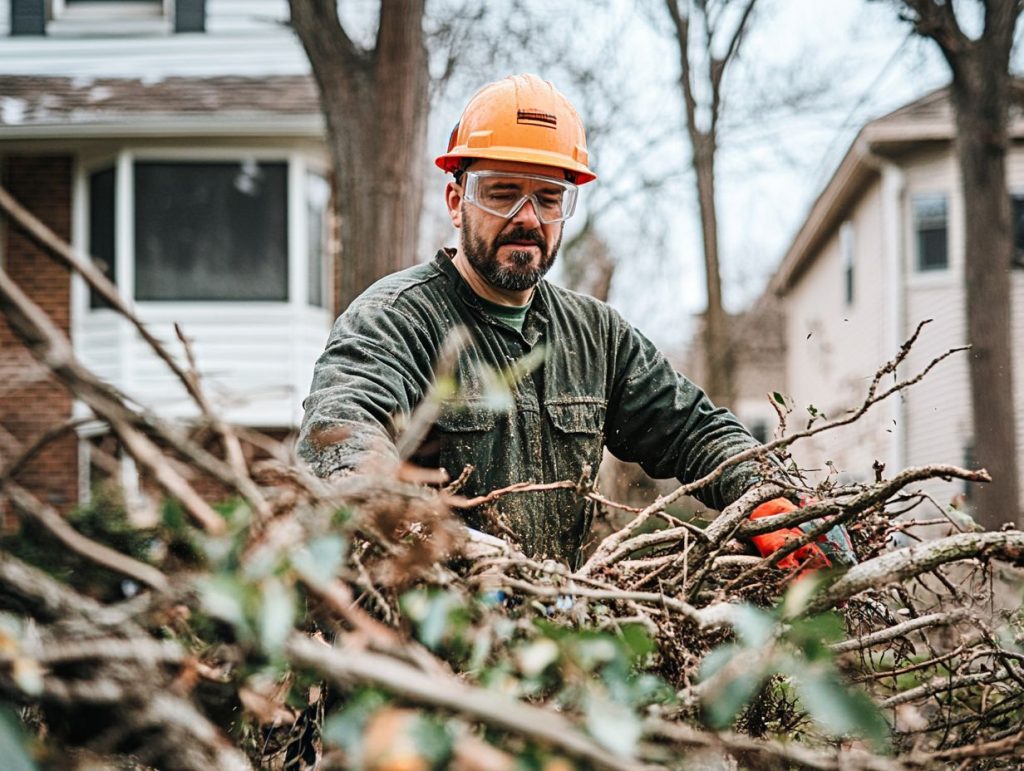
Tree Health and Growth Patterns
Trees’ health and growth patterns impact how well they can handle environmental stressors and protect your property from damage. Healthy trees with strong root systems are like the superheroes of the ecosystem, better able to fend off diseases and pests.
To keep things in check, you should regularly inspect trees for signs of disease or invasive species that could threaten their longevity. Additionally, using effective vegetation management techniques helps improve soil health and boost biodiversity in your landscape.
Soil integrity is crucial for your trees’ overall vitality. Nutrient-rich soil promotes more robust root development and helps retain water. Issues such as compaction, pollution, and pH levels can interfere with tree health, so it is wise to tackle these problems before they become significant concerns.
Paying attention to the connection between tree health and soil conditions ensures healthy growth and benefits wildlife habitats and air quality.
By prioritising regular assessments and taking the appropriate actions, you can help your trees thrive, benefiting your property and the larger ecosystem.
How Tree Surgery Can Prevent Property Damage
Tree surgery is essential for preventing property damage by keeping trees healthy and structurally sound. Regular maintenance and health checks can help you spot potential risks, such as weak branches or trees suffering from disease, so you can take action before problems arise.
You can effectively tackle hazards from overgrown branches or unhealthy trees by hiring skilled arborists for inspections. Proactive tree surgery not only protects your property but also enhances the overall appearance of your landscape.
Types of Tree Surgery Techniques
Tree surgery involves techniques to keep trees healthy and safe, such as pruning, branch trimming, and tree removal. Each approach has its purpose, with pruning and trimming focusing on improving a tree’s health and appearance, while tree removal addresses any safety issues posed by hazardous trees. If you have weakened trees, techniques like cabling and support systems can provide them the extra stability they need to withstand the elements.
Understanding these methods is key for anyone involved in tree maintenance. For example, pruning removes dead or diseased branches and encourages healthy growth by allowing more sunlight to reach the tree’s interior. This increase in sunlight improves air circulation, which can help fend off fungal infections. On the other hand, branch trimming is all about shaping the tree and maintaining its natural form while avoiding overcrowding.
When trees are structurally compromised, cabling and bracing can be real lifesavers, providing support to prevent breakage during storms. All these tree surgery practices work together to create a sustainable ecosystem, promoting biodiversity and ecological balance.
Benefits of Regular Tree Maintenance
Regular tree maintenance offers several benefits, such as better tree health, increased property value, and fewer safety hazards. By keeping an eye on your trees and giving them the care they need, you can help them live longer and ensure they contribute positively to the ecosystem and biodiversity of your landscape.
Good maintenance practices can help you avoid issues with tree diseases and structural weaknesses, making your property safer and more visually appealing.
Moreover, well-maintained trees can significantly boost your property value. They enhance curb appeal and attract potential buyers looking for a welcoming environment. You cannot underestimate the role of trees in community safety; they provide shade, help to reduce heat and create a comfortable outdoor atmosphere.
Their extensive root systems help control soil erosion, and their leaves capture pollutants, improving air quality.
When you invest time and resources into tree health, you beautify your space and support local wildlife by creating habitats and enhancing overall ecological balance. It is a wise move for sustainable living and the well-being of your community.
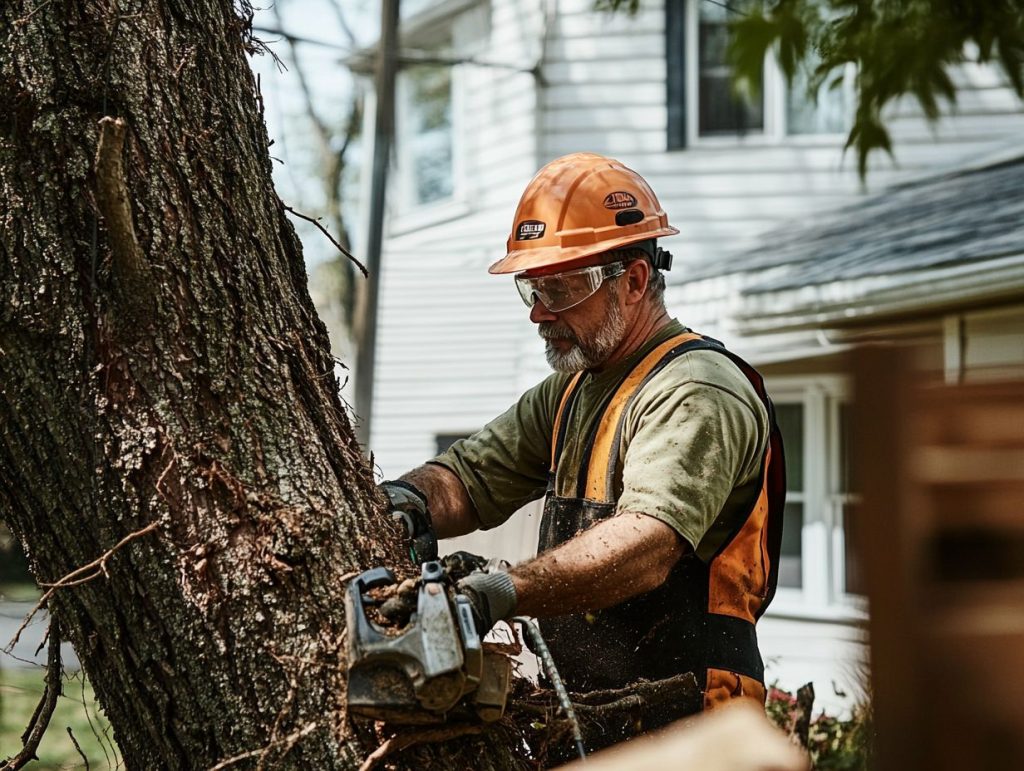
Hiring a Professional Tree Surgeon
When considering tree maintenance, hiring a professional surgeon is critical to completing the job safely and effectively. A qualified arborist has the skills and experience to assess your trees, spot potential risks, and implement the proper treatment strategies.
Their expertise helps you manage safety hazards and ensures that you’re in line with local regulations, which can be very important if you ever need to make a home insurance claim related to tree damage.
Qualifications and Experience to Look For
When choosing a professional tree surgeon, it’s essential to look for specific qualifications and experience that show they know their stuff about tree biology and safe pruning techniques. Certified arborists often have a wealth of knowledge about tree care practices and follow strict safety standards, which means they’re equipped to tackle any tree-related challenges that come their way.
Don’t forget to check if they comply with local insurance requirements; that will help protect your property and ensure you receive quality service.
A credible tree surgeon usually has completed formal training programmes and earned relevant certifications, which shows their commitment to ongoing education in the field. Understanding tree biology isn’t just about pruning; it’s also about recognising diseases, spotting pests, and implementing proper treatment plans. This well-rounded knowledge allows a tree surgeon to suggest effective care strategies tailored to your trees, helping them thrive in the long run.
You’ll want a reputable professional who prioritises safety, using best practices and specialised equipment to minimise risks while working at heights and handling heavy branches.
Cost and Time Considerations
Understanding the costs and time of hiring a tree service is key to effectively budgeting and planning your tree maintenance schedule. While prices can vary based on factors like tree size, location, and the complexity of the work, investing in professional tree care can save you from expensive repairs later on due to property damage. Keeping a regular maintenance schedule helps you manage those expenses and ensures your trees receive timely care.
When estimating tree service costs, several elements come into play, such as the tree species, its health, and any local regulations that might dictate specific service requirements. You should also consider the long-term financial benefits of preventative care, as these services can reduce the chances of unexpected insurance claims from damage.
By budgeting for ongoing tree maintenance, you will protect your property and enhance the longevity and beauty of your landscape, ultimately saving you some money over time.
Tips for Maintaining Trees on Your Property
Keeping your trees in tip-top shape requires a proactive approach. You should use proper pruning techniques and conduct regular inspections to spot potential hazards.
By becoming familiar with the best practices for tree care, you can encourage healthy growth, enhance the appearance of your property, and reduce the risk of damage. Do not underestimate the importance of seasonal pruning—it is key to maintaining the structure and health of your trees. It helps you manage the foliage and keeps your trees strong and resilient.
Proper Pruning and Trimming Techniques
Proper pruning and trimming techniques are key to keeping your trees healthy and encouraging their best growth. Understanding when and how to do seasonal pruning impacts your trees’ overall structure and vitality.
Safe pruning means making clean cuts, which helps promote healing and reduce stress, allowing your trees to thrive in their environment.
Different techniques, such as thinning out crowded branches or removing dead wood, can boost air circulation and sunlight penetration, leading to healthier foliage. Timing your pruning during the dormant season helps prevent infections, while summer pruning can help you control growth and shape your trees the way you want.
Ensure you’re using the right tools, such as sharp shears and saws, for precise cuts that speed up recovery. And don’t forget about safety—always wear the appropriate gear and use ladders securely to protect yourself and your trees.
Ultimately, these thoughtful practices make your trees look great and help fortify them against pests and diseases.
Identifying and Addressing Potential Hazards
Identifying and tackling potential hazards with your trees is vital to keeping your property safe. Regular tree inspections can help you spot safety issues, such as dead branches or leaning trees, that could pose risks to your home and surroundings. A thorough risk assessment can guide you in taking the right actions, whether calling in emergency tree services or implementing preventive measures.
Using a systematic approach to hazard identification helps you catch issues before they become more significant problems. Working with certified arborists can provide you with insights not just into the visible signs of distress but also into the underlying structural health of your trees.
Regular inspections—ideally at least once a year or after severe weather—are essential for the long-term health of your landscape. By being proactive and intervening promptly, you can effectively manage risks, keeping your property and personal safety in check.…
Read More